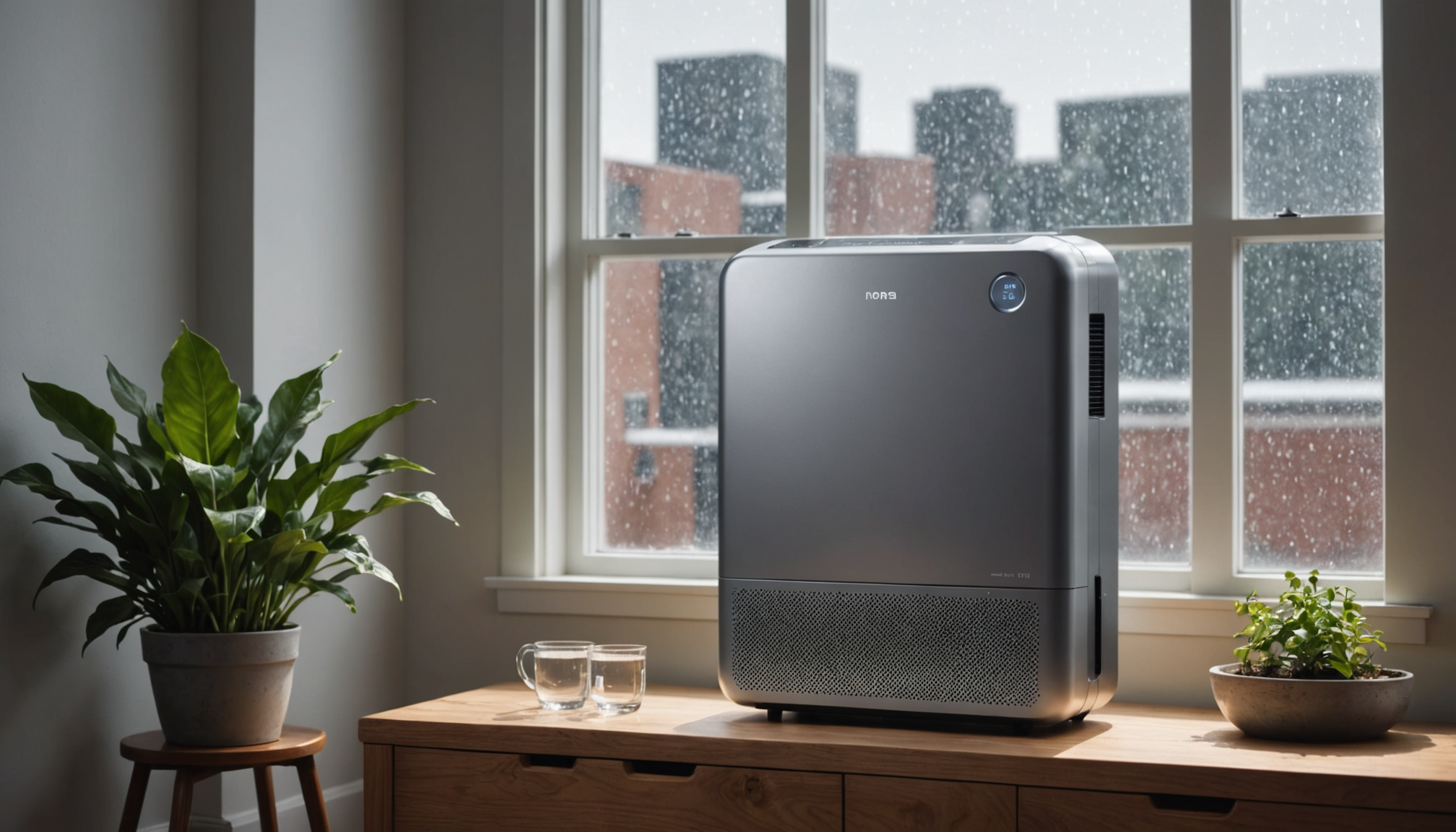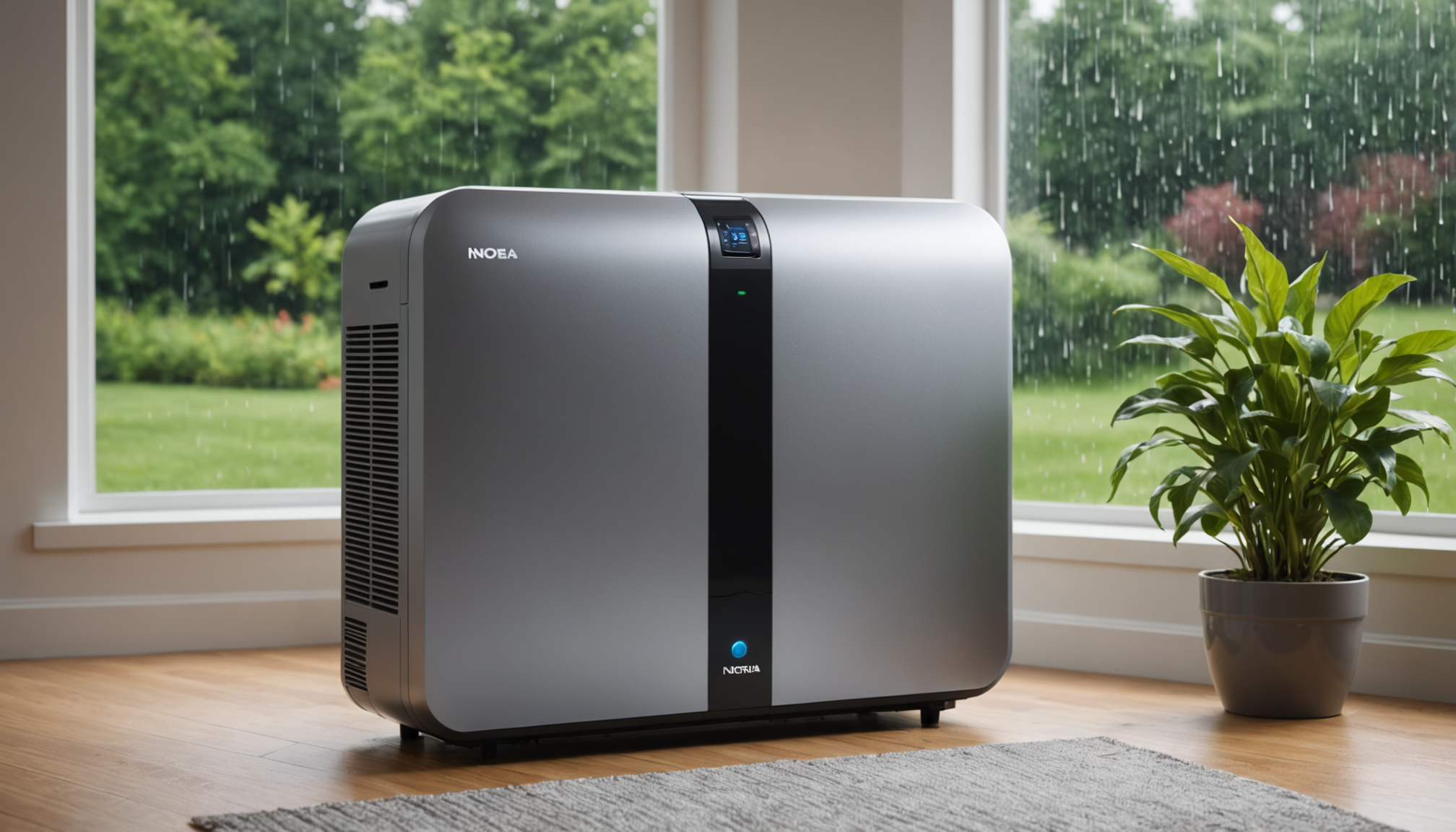The city of St. Louis is known for its vibrant culture, historical significance, and lively neighborhoods. However, if you’ve ever lived in or visited the area, you might also be familiar with its notoriously high humidity levels, particularly during the summer months. The combination of warm, moist air and periodic rainfall can contribute to a challenging indoor climate, especially in parts of the home like basements where ventilation may be limited. Understanding the dynamics of St. Louis humidity is essential for homeowners looking to protect their homes and enhance their indoor comfort.
St. Louis’s climate is categorized as humid continental, characterized by hot summers and cold winters. According to data from the National Climatic Data Center, the city experiences average summer humidity levels ranging from 60% to 80%. This natural moisture in the air can find its way into your basement, causing discomfort and potentially fostering the growth of mold, mildew, and dust mites. High humidity levels are not just a matter of personal comfort; they can also lead to structural damage over time, warping wood fixtures and peeling paint. For these reasons, understanding and managing humidity levels in your home, specifically in below-ground spaces, is crucial.
The challenge of maintaining optimal indoor air quality in St. Louis often necessitates the use of a dehumidifier, especially in basements. These appliances work by drawing in humid air, extracting the moisture, and then expelling the drier, conditioned air back into the space. Many homeowners in the region have turned to dehumidifiers as an integral part of their HVAC system to maintain a balanced environment. The effectiveness of a dehumidifier in reducing indoor humidity not only diminishes the risk of mold damage but also improves overall air quality, creating a healthier living space.
Determining the right dehumidifier size
When choosing a dehumidifier for your basement in St. Louis, it’s crucial to select the right size to ensure optimal performance against the challenging humidity levels typical of the region. The capacity of a dehumidifier is measured in pints, indicating how much moisture it can remove from the air within a 24-hour period. To determine the appropriate size, consider both the square footage of your basement and the extent of the dampness.
Start by measuring the size of your basement. For a small space of up to 500 square feet, a dehumidifier with a 10-pint capacity will generally suffice for areas experiencing mild dampness. If your basement is larger or subject to more severe humidity issues, you’ll need a device with a higher capacity. Basements covering 500 to 1,000 square feet will typically require a 12–22 pint unit, depending on the extent of moisture. For even larger or very damp areas exceeding 1,500 square feet, a dehumidifier of 30 pints or more is recommended to effectively manage the humidity.
In addition to square footage, assess the level of moisture in your basement. If musty odors, water stains, or noticeable condensation are present, it might indicate a higher level of humidity that demands a larger-capacity dehumidifier. Also, consider the placement of your dehumidifier. Ensure it has unobstructed airflow by positioning it away from walls and furniture to maximize its efficiency. Regularly empty the water collection bucket or connect a drainage hose if available, to maintain consistent operation.
Selecting the correct size for your dehumidifier will lead to more efficient operation, lower energy consumption, and improved air quality, creating a healthier and more comfortable living environment.
- Measure your basement to determine the square footage and match it with the suitable dehumidifier capacity.
- Consider the severity of moisture and adjust the dehumidifier size accordingly.
- Ensure proper placement of the dehumidifier for unobstructed airflow to boost efficiency.
- Choose a dehumidifier with additional features such as a drainage hose for continuous operation.
- Oversizing or undersizing a dehumidifier can lead to inefficient performance and increased energy costs.
Factors affecting basement humidity
Humidity in basements can be influenced by a variety of factors, many of which are particularly relevant to homeowners in St. Louis due to the city’s fluctuating climate. One primary factor is the local weather conditions. St. Louis experiences significant seasonal changes, with summer months being particularly humid. This external humidity can seep into the basement not only through air exchange but also via ground absorption and capillary action, where moisture from the soil surrounding the basement walls penetrates the structure.
Another crucial factor is the construction quality and state of the basement. Basements with poor insulation, inadequate waterproofing, or cracks in the foundation are more susceptible to moisture ingress. Over time, water can find its way through minor structural weaknesses, leading to higher humidity levels internally. Proper sealing and insulation can help mitigate this issue by creating a more effective barrier against external moisture sources.
Additionally, the presence and condition of HVAC systems can greatly affect basement humidity. HVAC systems with integrated dehumidification options can help maintain indoor moisture levels. However, if these systems are outdated or poorly maintained, they may not offer sufficient humidity control, allowing dampness to accumulate. Ensuring your HVAC system is regularly serviced and up-to-date can greatly enhance humidity management.
Lastly, lifestyle factors, such as laundry and drying clothes inside the basement, can significantly increase humidity levels. These activities release moisture into the air, exacerbating existing humidity problems if not managed properly. Installing proper ventilation or utilizing a dehumidifier can help counteract this added moisture.
By understanding these factors, homeowners in St. Louis can better manage basement humidity, protecting their homes from potential moisture-related damages, and maintaining a comfortable indoor environment.
Benefits of using a dehumidifier
Using a dehumidifier in your St. Louis basement comes with numerous advantages that significantly enhance your living environment. Firstly, by actively reducing the moisture content in the air, a dehumidifier helps protect against mold and mildew, which thrive in damp conditions. These fungi not only damage your belongings and affect the structural integrity of your home but also lead to health issues such as allergies and respiratory problems. By keeping humidity levels in check, a dehumidifier safeguards your health and maintains the structural stability of your home.
Moreover, maintaining the right humidity level also improves overall indoor air quality. Excess moisture often leads to musty smells and can contribute to dust mites and other allergens, a common issue for many St. Louis homes during humid seasons. With a dehumidifier, these indoor pollutants are minimized, resulting in a fresher and more breathable environment. This is particularly vital in basements, where poor ventilation is common.
Using a dehumidifier can also yield significant energy savings. When air is less humid, your HVAC system doesn’t have to work as hard to maintain a comfortable temperature, resulting in a more efficient operation and reduced energy bills. This eco-friendly advantage not only lowers your electricity costs but also decreases your carbon footprint, aligning with a more sustainable lifestyle choice.
Lastly, dehumidifiers offer convenience and peace of mind. Many modern models come equipped with automatic humidity controls, allowing you to set your preferred moisture level and then simply let the unit work autonomously. They also feature energy-efficient settings and continuous drainage options, making maintenance straightforward.
To make the most out of these benefits, choose a dehumidifier with the right capacity for your space, and keep an eye on routine maintenance tasks like filter cleaning and checking for water buildup. By taking these simple steps, you ensure your dehumidifier operates efficiently and effectively, allowing you to enjoy the comfort of a dry, healthy home environment. Embrace the proactive approach to managing St. Louis humidity, knowing that with each step, you’re enhancing the quality of life for you and your family.
Tips for maintaining your dehumidifier
Regular maintenance of your dehumidifier enhances its longevity and operational efficiency, ensuring it effectively combats the humidity levels typical of St. Louis, particularly in basement areas. Start by cleaning or replacing the air filter at least once every three months. A clogged filter can reduce airflow, causing the unit to work harder than necessary, which can lead to overuse of energy and increased wear. After cleaning the filter, inspect the coils for any dust accumulation; keeping them clean ensures optimal humidity extraction.
Check the water collection bucket regularly. Empty and clean it frequently to prevent mold growth, which can reintroduce moisture and pollutants back into the basement air. Alternatively, if your unit supports it, use a continuous drainage option to save the hassle of manual emptying. It’s also essential to inspect the drainage hose (if used) for clogs or leaks that could hinder effective moisture removal.
Additionally, monitor the room temperature and humidity since dehumidifiers are less efficient at lower temperatures. For basements that tend to remain cold, you might need to consider a low-temperature model which operates efficiently even in cooler environments. Ensure your dehumidifier is placed in an optimal location – away from walls or large furniture – to promote good air circulation around the device, further enhancing moisture extraction.
Finally, schedule an annual maintenance check for dehumidifiers integrated into your HVAC system. Professional servicing will help spot and rectify problems not easily visible to homeowners, maintaining the unit’s efficiency and your indoor comfort. By adhering to these preventive measures, you can maximize your dehumidifier’s performance, providing a healthier, more comfortable living space.
- How do I know if my dehumidifier is the right size for my basement?
- The size of your dehumidifier should match the square footage of your basement and the level of humidity present. For instance, a space up to 500 square feet might only need a dehumidifier with a 10-pint capacity, but larger or more humid spaces will require a unit with higher capacity to effectively manage moisture levels.
- How often should I clean the dehumidifier’s filter?
- Ideally, the dehumidifier filter should be cleaned every three months to maintain optimal performance. In environments with particularly high humidity or dust, it may be necessary to check and clean the filter more frequently.
- What should I do if my dehumidifier is leaking?
- First, check the water collection bucket to ensure it isn’t overfilled and verify any drainage hoses for blockages or disconnections. Additionally, examine the dehumidifier for cracked or damaged components and ensure it is positioned on a level, stable surface to prevent tipping or spillage.
- Why does my basement still feel damp even with a dehumidifier?
- Your dehumidifier might be undersized for the space or the severity of the dampness, potentially requiring an upgrade to a model with a higher capacity. Ensure the unit is properly maintained, with clean filters and unobstructed airflow, and consider additional measures like proper ventilation and sealing to support the dehumidifier’s efforts.
- Can I leave my dehumidifier running all the time?
- Modern dehumidifiers often come with automatic sensors that help maintain a set humidity level, allowing them to cycle on and off as needed. While it’s generally safe to leave a dehumidifier running, excessive use may lead to increased energy consumption and wear, so setting an optimal humidity level is ideal for balancing efficiency.

